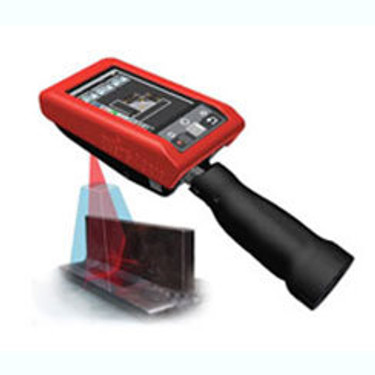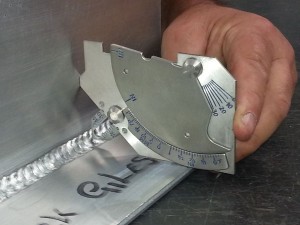Understanding the Importance of Welding Assessment in Ensuring Structural Stability and Safety Throughout Different Industries
Welding inspection is a vital process that safeguards structural honesty and safety across varied industries. As we explore the details of welding evaluation, the concern emerges: what are the most vital variables that contribute to reliable assessment procedures?
Duty of Welding Inspection
While the integrity of bonded frameworks is extremely important to safety and security and performance, the function of welding inspection can not be overemphasized. Welding evaluation works as a crucial quality assurance process that makes certain the adherence to established requirements and specs throughout the welding procedure. By methodically evaluating welds for flaws, inconsistencies, and non-compliance, inspectors play a vital duty in safeguarding the integrity of structures throughout different sectors.
Welding inspections include a variety of tasks, from pre-weld assessments to post-weld examinations. These analyses not just identify prospective issues prior to they rise however also enhance the overall integrity and life expectancy of bonded elements. Welding Inspection Milwaukee. Examinations aid to validate the skill and proficiencies of welders, guaranteeing that welding treatments are performed properly and materials work
Moreover, a rigorous examination protocol cultivates compliance with regulatory demands and market criteria, decreasing the danger of catastrophic failings. By promoting a society of safety and liability, welding evaluation contributes significantly to both economic and functional efficiencies. Altogether, the function of welding inspection is vital, as it underpins the high quality, safety, and long life of bonded frameworks important to modern-day framework and industry.
Types of Welding Evaluations
Recognizing the various kinds of welding inspections is vital for maintaining the top quality and safety of bonded structures. Welding inspections can be classified into a number of kinds, each offering a particular function in the examination procedure.
Aesthetic evaluation is the most fundamental type, involving a mindful exam of the welds with the naked eye or via magnifying. This technique assists recognize surface problems such as cracks, insufficient combination, or too much spatter.
These methods enable assessors to examine the stability of welds without jeopardizing the product's framework. Ultrasonic screening makes use of high-frequency sound waves to find internal problems, while radiographic testing employs X-rays or gamma rays to imagine inner weld qualities.
Destructive screening, though much less common, involves physically testing examples to recognize the weld's mechanical residential properties. Each kind of examination contributes to a thorough assessment, guaranteeing that welding fulfills sector requirements and safety and security demands.
Market Specifications and Regulations
Developing industry standards and guidelines is critical for ensuring the safety and reliability of welded structures. These standards act as benchmarks for high quality, efficiency, and security, directing producers and assessors in the execution of welding procedures. Numerous companies, such as the American Welding Society (AWS) and the International Company for Standardization (ISO), have developed extensive standards that determine procedures for welding methods, qualification of welders, and examination techniques.
Conformity with these guidelines not just boosts the top quality of welds but additionally decreases dangers have a peek at this website connected with structural failures. Specific codes, such as the ASME Central Heating Boiler and Stress Vessel Code, outline requirements for the building of stress vessels, guaranteeing they can withstand functional stress and anxieties. Additionally, local and national guidelines frequently mandate adherence to these market standards, strengthening their importance across markets like building and construction, aerospace, and automobile production.
Regular updates to these requirements mirror improvements in technology and welding strategies, ensuring that safety actions stay relevant. Therefore, a thorough understanding and application of these standards is essential for welding professionals, promoting a society of safety and quality in bonded structures.
Consequences of Poor Inspections
Poor examinations can bring about severe consequences in the welding sector, threatening the really standards and guidelines developed to ensure safety and security and architectural stability. The consequences of poor examinations can manifest in different forms, from prompt safety and security hazards to lasting architectural failings. Among one of the most disconcerting end results is the potential for devastating crashes, which can cause significant injury or loss of life. In markets such as aerospace, manufacturing, and building and check over here construction, the implications of subpar welding can endanger whole structures or elements, bring about costly repair services and substantial downtime (Welding Inspection Milwaukee).
Moreover, inadequate inspections can stain a business's online reputation and cause lawful repercussions, including penalties and lawsuits. Non-compliance with established standards not only threatens the integrity of projects however additionally decreases customer trust in the brand. Furthermore, the economic ramifications can be shocking, encompassing both direct costs related to repair work and indirect prices such as shed organization possibilities and raised insurance policy premiums. Ultimately, the implications of poor examinations extend beyond specific jobs, influencing industry-wide requirements and public understanding, therefore stressing the critical demand for rigorous and efficient welding evaluations.
Finest Practices for Effective Evaluations
Efficient welding inspections are paramount to ensuring the honesty and safety and security of welded structures. To attain ideal outcomes, assessors need to abide by numerous ideal techniques that boost the examination process.

Secondly, inspectors ought to possess the required certifications and qualifications relevant to the welding procedures and products being checked out. Recurring training and professional development are vital to remaining updated on market standards and technical advancements.
In addition, making use of proper examination devices and methods, such as visual evaluations, ultrasonic screening, and radiographic assessments, is vital for identifying issues that can jeopardize structural integrity.
Last but not least, comprehensive paperwork of the inspection process is essential. By implementing these ideal practices, companies can dramatically boost the performance of their welding examinations and make sure risk-free, dependable procedures.
Final Thought

Finally, welding assessment is vital for maintaining architectural integrity and safety across different sectors. By systematically examining welds and sticking to established criteria, the evaluation procedure mitigates risks connected with defects and additional resources non-compliance. The execution of finest practices in welding assessments not only enhances the integrity and life-span of bonded parts yet likewise promotes sector regulations. Consequently, focusing on reliable welding inspections is imperative to make sure the safety and security of personnel, possessions, and total operational honesty.

As we discover the details of welding inspection, the inquiry develops: what are the most important variables that contribute to effective assessment processes?
Welding assessment offers as a critical high quality control process that makes sure the adherence to established standards and requirements throughout the welding operation. In amount, the duty of welding evaluation is indispensable, as it underpins the high quality, safety and security, and long life of welded frameworks vital to modern facilities and sector.
Various companies, such as the American Welding Society (AWS) and the International Organization for Standardization (ISO), have actually developed detailed standards that dictate treatments for welding methods, credentials of welders, and inspection techniques.
Ultimately, the ramifications of poor evaluations expand past private jobs, influencing industry-wide standards and public perception, thus emphasizing the vital demand for rigorous and reliable welding inspections.